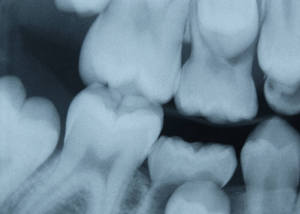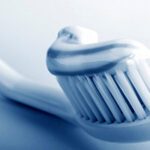If you ever need an upper tooth extracted, it is important that your dentist advise you if your tooth roots are in the sinus cavity. Especially if you are over 50 years of age, tooth roots can grow well into the sinus, and this can create a real problem that is difficult to treat. In addition, if you are contemplating implants in the upper gum, many dentists will recommend “sinus lifts” to avoid a problem that my husband experienced a few years ago.
My husband , Ed, went through a nightmare two years ago after a simple extraction of a root-canal tooth that had started to go bad. My husband had no pain in the tooth, but the dentist noticed some deterioration of the root canal and suggested extraction. The tooth was the last molar on the upper left side of his mouth.
The extraction went smoothly as he went to a good oral surgeon. However, the root of the tooth was deep within left sinus and he was given “sinus precautions” after the surgery, including sleeping in an upright position for a few days. For most people, these precautions work just fine and the gum heals over naturally. In my husband’s case, he became the victim of a little known complication called an oral-antral fistula, or, in simple terms, an opening in the gum which allows germs from the mouth to enter the sinus cavity. This leads to serious infection in the sinus that is difficult to treat. As a result of the infection, the fistula will not close, meaning the gum will not heal over the opening naturally.
For about a month after the extraction, Ed thought everything was healing nicely. There was no pain or other indication that anything was wrong. He had the extraction in July and by mid-August, he got a sinus infection. Although he didn’t realize it, this was the first sign something was wrong. We didn’t think he needed to see the oral surgeon, so his symptoms were treated as the usual sinus infection. By the end of August, Ed was rinsing his mouth and suddenly found that the water he rinsed with was coming through his nose. Knowing this was not right, he went back to the oral surgeon who realized that the gum had not yet fully healed. There was no external sign of an opening, so Ed was told to wait a few more weeks and then return for an evaluation.
One night in early September, he began to have facial pain on the side of the extraction and a spiking fever ensued. He also realized that he was tasting something unusual. At this point, the oral surgeon had him come in and he was told that the opening where the tooth had been had not healed and that what he was tasting was from the sinus cavity which was now chronically infected. The solution was to do a “cheek flap”. This involved taking part of the skin in his cheek on the side of the extraction and pulling it around the gum area to effectively close it. However, before he could do this, Ed had to endure six sinus washings, accomplished by pushing a syringe through the open gum or fistula to cleanse the sinus from infection.
The cheek flap procedure was completed in late September. Ed was told that the flap would be 99.9% effective. For a few days, Ed had relief of the noxious taste in his mouth, and then he tasted it again. For the next six weeks Ed was given a series of antibiotics and had frequent visits with the oral surgeon. There was no sign of healing. The oral surgeon told him that he was only the second case in 20 years in which the cheek flap failed. He was told to see an ENT physician for further evaluation. The local ENT referred him to an otolaryngologist in a large Manhattan hospital who specialized in this type of problem. The fistula needed to be closed by a combination of nasal endoscopic surgery, and a procedure called a caldwell-luc. The caldwell-luc, named after the physicians who first used the procedure, consisted of cutting through bone above the gum line into the maxillary sinus so that infection can be scraped away. It was a three hour surgery. It was now November.
This was not the end of the treatment. After sinus surgery, frequent visits to the otolaryngologist were necessary so that the newly opened sinus could be debrided of clotted blood. This procedure usually left Ed in a lot of pain for several hours. Antibiotic and steroid treatment was necessary for several weeks, along with washes with a substance called Alkalol, a sinus cleanser. It was not until four months following the operation that the sinuses were viewed as clean and the fistula healed. Between the surgery of November, 2006 and March, 2007, Ed was hospitalized with another sinus infection that caused swelling of his face. This was most likely due to the fact that bone was removed during the caldwell-luc procedure and this bone would take about nine months to regenerate.
Today, Ed continues to do saline sinus washes twice daily, but he has a much better opening and air exchange in the affected sinus. He does get some facial pain and numbness from time to time if the sinuses become congested.
We would never have thought such a simple procedure as a tooth extraction would create such a problem. We were told that this type of problem is “one in a million.” Yet, the dental literature is full of articles and papers on oral-sinus fistulas. It is certainly something to be aware of if you are contemplating work on your upper teeth, including implants. It is certainly worth questioning your doctor on how you might avoid such a problem if your teeth roots are int he sinus.





